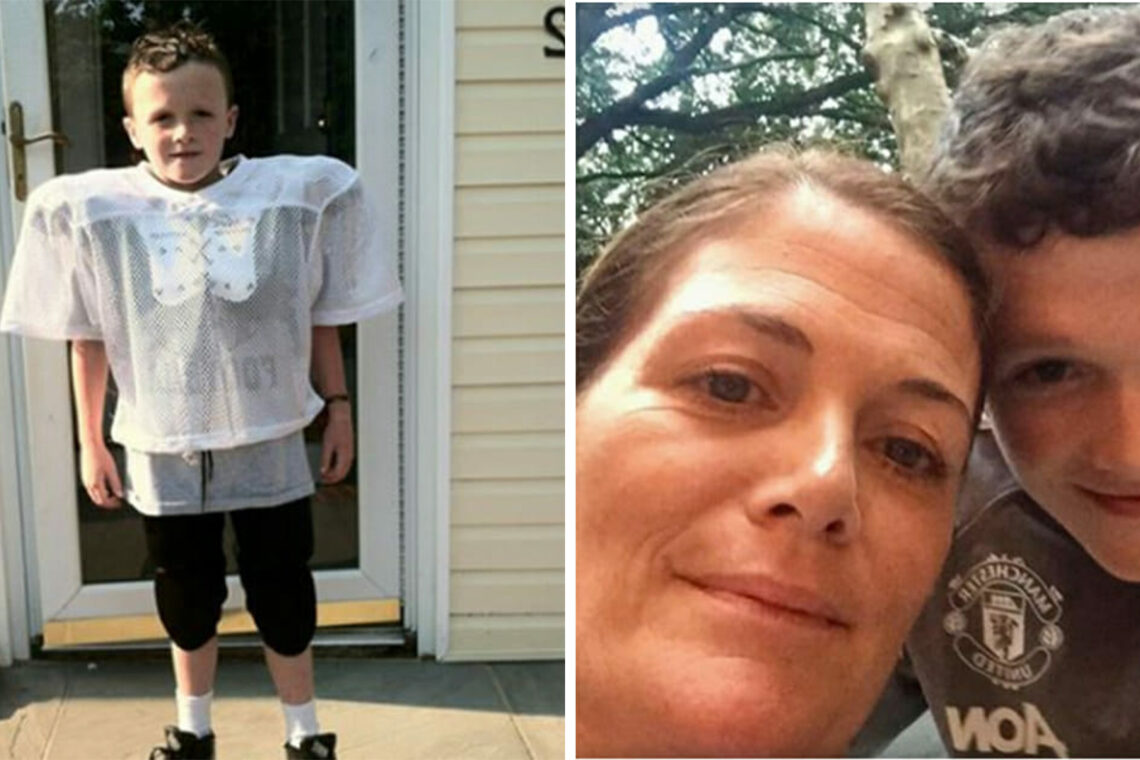
Liam, a lively and spirited teenager, had always found joy in soccer, bike rides, and spending time with his friends. His life mirrored that of many seventh graders, filled with laughter, play, and the simple pleasures of adolescence. Yet, everything changed dramatically one day when he approached his mother and made an unexpected decision: he handed her his cell phone and declared that he no longer wanted it. This peculiar choice left his mother, Deirdre, puzzled; she initially chalked it up to the typical mood swings that often accompany teenage years. However, as days turned into weeks, Deirdre noticed something alarming: her once-vibrant son was becoming increasingly withdrawn. His enthusiasm for his favorite activities began to wane, and even his appetite diminished, leaving him looking more fragile and distant than ever before.
Worried about her son’s drastic transformation, Deirdre felt compelled to take action. She gently encouraged Liam to open up about what was troubling him, sensing that something deeper was at play. Despite her persistent efforts, he remained tight-lipped, refusing to share the weight on his shoulders. It was heart-wrenching for her to witness the changes in Liam, especially as he had always been so passionate about soccer, proudly carrying his ball wherever he went and relishing every moment spent on the field.
As Deirdre observed Liam’s decline, she couldn’t help but feel a sense of urgency. With four other children to care for, she found herself torn between her responsibilities and her concern for Liam. Determined to get to the root of his suffering, she finally sat him down for a heart-to-heart conversation, begging him to confide in her.
After much hesitation, the truth began to surface. Liam revealed that he had been subjected to relentless bullying over the past year. A group of peers, who had once been considered friends, turned against him, cruelly labeling him as inadequate. The torment escalated, manifesting in verbal abuse, physical pushes, and a barrage of hurtful remarks. Liam was even subjected to the unfathomable suggestion that he should end his life. The weight of these experiences weighed heavily on him, leading to an eating disorder that took a toll on his physical and mental health.
Deirdre recounted the devastation of discovering her son’s struggles, and both shared tears as they confronted the gravity of his situation. They decided to reach out to the school for assistance, but to their dismay, the institution failed to take appropriate action. Even after Liam returned home with visible bruises from confrontations, the school administration brushed off their concerns, leaving Deirdre feeling helpless and frustrated.
As Liam’s health deteriorated, he found himself in a dire situation that required hospitalization and the insertion of a feeding tube. Watching her son suffer in silence while the school turned a blind eye was unbearable for Deirdre. It became clear that they needed a different approach, one that would shed light on Liam’s plight and rally support from the community.
Taking a brave step, Deirdre decided to share their story on social media, hoping to connect with others who might have faced similar challenges. To her surprise, the response was overwhelming. People from across the globe began to share their experiences with bullying and offer words of encouragement. The hashtag #WeStandWithLiam quickly gained traction, uniting countless individuals who stood in solidarity with Liam and his journey.
Throughout this challenging period, Liam underwent rigorous therapy to address both his depression and eating disorder. The road to recovery was arduous, filled with emotional hurdles and physical trials. Yet, after ten long weeks of dedicated treatment, Liam reached a point where he was stable enough to return home.
This resilient young man, determined to reclaim his life, made an inspiring decision: he would return to school and rejoin the soccer team. It was a powerful statement of his strength and resolve to face the very environment that had caused him so much pain. As the soccer season progressed, Deirdre watched with immense pride as her son not only returned to the field but also found a way to rediscover his love for the game.
Liam’s journey is a poignant reminder of the challenges many children face, often hidden beneath the surface. Bullying remains a pervasive issue in schools, affecting countless young lives. Many victims suffer in silence, struggling to find the support they desperately need. It’s crucial for communities, schools, and families to come together to address this issue head-on, holding bullies accountable and fostering an environment where kindness prevails over cruelty.
Deirdre’s story highlights the importance of open communication between parents and children, as well as the need for vigilance in recognizing the signs of distress in young people. By sharing their experiences, she hopes to inspire others to speak out against bullying and to support those who are suffering. Liam’s brave return to the soccer field serves as a testament to his resilience and determination to rise above adversity.
Ultimately, this journey emphasizes the critical need for awareness and action. Every child deserves a safe and supportive environment where they can thrive. Together, we can work towards ensuring that no child faces bullying alone, and that those who suffer know they are not forgotten. Liam’s story is one of courage, strength, and the enduring power of community support.